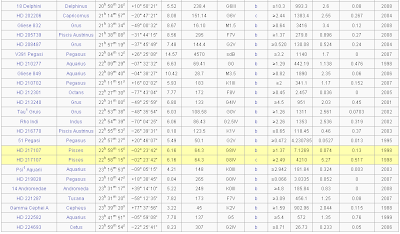Kepler mission begins - more extrasolar planets soon to be added to the growing list
Thursday, May 14, 2009
So, Kepler has begun its mission, and that means it's only a matter of time now before we discover the first Earth-like planets in other solar systems...if Earth-bound observatories don't beat Kepler to it first. Since the easiest planets to find around other stars are large planets in close orbits to their stars (hot Jupiters), the first discoveries should be extremely large gas planets orbiting very close to red dwarfs. The first Earth-like planets discovered by Kepler will probably also be around red dwarfs, since the habitability zone for these stars is so close in that the orbits for these planets will also be quite short.
Let's take a moment now to take a look at just how many planets have already been discovered, as I don't think we quite appreciate just how much has already been done, and the fact that even this is just barely scratching the first scratch on that first scratch of an even tinier scratch on the surface. Wikipedia has a list of extrasolar planets here, and since it's divided into two (planets we know the mass of and planets we're still not 100% sure about) I thought I'd put them together to show just how many there are. The rate of detection over the past two years has been 62 planets per year, and this is going to shoot up not only thanks to Kepler but also this new method of detecting planets with greater precision than before, by identifying the movement of a star brought about by its planet to a precision of 1 m/sec or less, compared to current rates of a few metres per second...and maybe even down to 1 cm/sec later on.




















0 comments:
Post a Comment